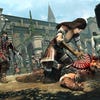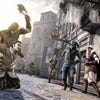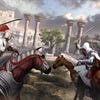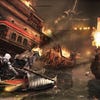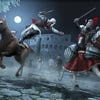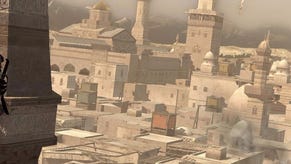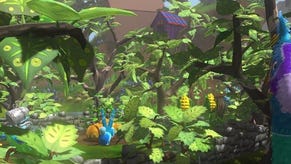Assassin's Creed: Brotherhood
Auditore tract.
You can also send your guild members off on missions around Europe, choosing tasks of suitable difficulty in order to earn experience points that, in time, level their abilities. In much the same way as, say, Final Fantasy Tactics, these guild missions have a time cost, removing your assassins from play till their mission is completed, either through victory or defeat. This management RPG component reinforces Ezio's newfound stature as a leader by giving you, the player, a sense of responsibility for your charges, inspiring pride at their victories and keen regret at their death.
For the first time, Brotherhood introduces gunpowder to the treason, plot and parkour that has defined the series so far. Ezio's villa is now kitted out with cannons, used to defend it against Borgia retribution in the game's opening moments. More than that, Ezio also carries a firearm, a pistol concealed in his sleeve that can be used to shoot soldiers from their horses, or quietly headshot targets from behind. For a game based upon the art of the blade, ballistic weaponry (later in the game there are supposedly tanks and machine guns) feels incongruous.
While the first game in the series was criticised for being environmentally rich but mechanically repetitive, Assassin's Creed II introduced a host of objectives to add variety and interest to the game's exquisite cities. Brotherhood piles on yet more interest to keep you busy. The map screams with blinking icons, each one representing a different interactive opportunity, encouraging you to recruit new assassins, capture towers to increase your influence, take on side missions and aid those in need around you.
The compelling villa management aspect to the second game has been upgraded again for Brotherhood. Now, as Borgia power weakens in Rome, you will be able to rebuild, renovate and upgrade many assets of the city. Shops, faction headquarters and the fast travel system are all subject to upgrades while rebuilding and renovating buildings within a district increases its value, bringing prosperity and wealth to the people who live there. Before you can renovate a particular part of the city, you'll need to locate the Borgia tower in the district, defeat the captain who lives there, and burn the construction down, lending the game a redemptive overlay as you combat control with freedom and work to change the lives of Rome's citizens.
Similar to the first two games, there are many modern-day interludes in which you play as Ezio's descendent Desmond who, alongside his love interest and Da Vinci Code-style team of archaeologists, traces his ancestors through modern-day Italy. By setting these sections in the same locations as those being explored by Ezio, they are more successful than they have been in the past, adding diversity and a different perspective on the closely familiar historical free-running elsewhere in the game.
That said, all of the additions are just that: add-ons that do little to alter the nature of play in the Assassin's Creed universe. Even guns haven't upset the fine, if curious, balance of the previous game. The question then is whether the fresh seasoning does enough maintain interest across a 15-hour campaign that, storyline aside, remains relatively unchanged. If not, Rome may once again fall.

